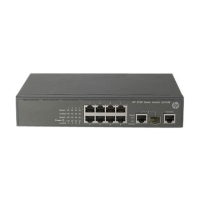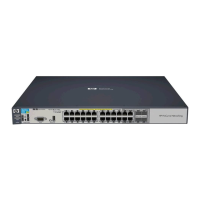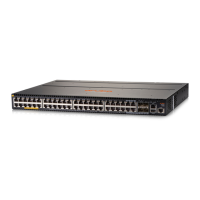147
Specifying a NAS ID profile for an interface
In some networks, users' access points are identified by their access VLANs. Network carriers need to
use NAS-identifiers to identify user access points. With a NAS ID profile specified on an interface, when
a user logs in from the interface, the access device checks the specified profile to obtain the NAS ID that
is bound with the access VLAN. The value of this NAS ID is used as that of the NAS-identifier attribute in
the RADIUS packets to be sent to the RADIUS server.
A NAS ID profile defines the binding relationship between VLANs and NAS IDs. A NAS ID-VLAN
binding is defined by the nas-id id-value bind vlan vlan-id command, which is described in detail in AAA
configuration commands in the Security Command Reference.
If no NAS-ID profile is specified for an interface or no matching binding is found in the specified profile,
the switch uses the device name as the interface NAS ID.
To configure a NAS ID profile for an interface:
Ste
Command
Remarks
1. Enter system view.
system-view N/A
2. Create a NAS ID profile and
enter NAS ID profile view.
aaa nas-id profile profile-name
For more information about the
command, see Security Command
Reference.
3. Bind a NAS ID with a VLAN.
nas-id nas-identifier bind vlan
vlan-id
For more information about the
command, see Security Command
Reference.
4. Return to system view.
quit N/A
5. Enter interface view.
interface interface-type
interface-number
N/A
6. Specify a NAS ID profile for
the interface.
portal nas-id-profile profile-name
By default, an interface is specified
with no NAS ID profile.
Specifying a source IP address for outgoing portal
packets
After you specify a source IP address for outgoing portal packets on an interface, the IP address is used
as the source IP address of packets that the access device sends to the portal server, and the destination
IP address of packets that the portal server sends to the access device.
To specify a source IP address for outgoing portal packets to be sent:
Ste
Command
Remarks
1. Enter system view.
system-view N/A
2. Enter interface view.
interface interface-type
interface-number
N/A
